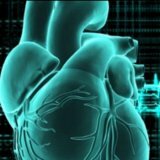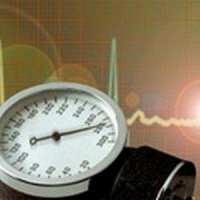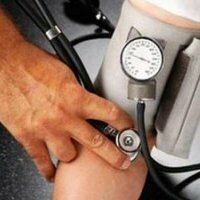Atrial fibrillering: laserbehandling

The laser can be used to treat cardiac arrhythmias, namely atrial fibrillation. The essence of the present invention consists in exposure to a helium-neon laser radiation on the desired heart zones, hemopoietic and cleansing organs for 30-60 seconds per each, the course consists of 10-12 sessions that are performed every other day, and on days off from irradiation, Four-chamber chloride-sodium baths and a light massage of the lower extremities are carried out. This method, like laser treatment, is simple in execution, significantly shortens the duration of the procedure, positively affects the patient due to the fact that painful procedures are excluded.
Laser description
There are cases when it is difficult to choose the necessary drugs or it is completely impossible, for example, because of allergic reactions, resistance to drugs.
A helium-neon laser laser beam is inserted into the right atrium area through a venous catheter and irradiation is performed for 40 min, the course of treatment consists of 3-5 treatments. As a result of this method of treatment, the frequency of cardiac arrhythmias becomes less.
The disadvantage of the method is its complexity and some complications, even death( 38 patients - three deaths).Less dangerous treatment of ventricular arrhythmias is intravenous blood irradiation with helium-neon laser for 25-30 minutes every day, 4-5 days with recurrence of treatment every three for one and a half years. In this case, laser irradiation of blood goes along with drug therapy.
Disadvantages of this method
- ineffective - all cardiac arrhythmias go through only after a large number of treatment courses;
- procedure is complex and painful;
- method limitation( it can not be used without drug therapy: method);
- because of the lack of sterilization is a great danger of transmission of infection, including AIDS, through the blood.
Another kind of laser
There is also a mechanism of the effect of external laser irradiation of reflexogenic heart zones. At the heart of cardiac arrhythmias lie( ciliary arrhythmia) processes that affect microcirculation, biochemical reactions in cells and tissues that change the rheological blood state and its chemical composition, as well as stimulating processes of recovery in the heart, including those responsible for its rhythm.
The comparative analysis of this method and the prototype shows that in the known method, heart rhythm disturbances are treated by intravenous blood irradiation with a helium-neon laser, and in the above method by external irradiation of the helium-neon laser heart zones.
Comparison with the
prototype When comparing this method not only with the prototype, but also with other known methods of treating cardiac rhythm disorders or other cardiac diseases, there is no method that contains the totality of features of the claimed subject.
Atrial fibrillation: laser treatment - the advantages of
Easy to perform, quite comfortable( no painful reception) and wide distribution of helium-neon lasers in medical institutions make this method used in specialized clinics and in other medical institutions.
Thus, this proposed method, in comparison with the prototype, helps to provide higher efficacy after the first course of treatment, and also:
- allows to widen the range of patients due to those who are not cured by drug therapy( while the method proposedIn the prototype, it is used as an additional drug for drug therapy);
- is simple in execution and can be performed even by a middle-level medical worker;
- reduces the duration of the procedure from 30 minutes( and together with the preparatory operations for about 1 hour) to 5-6 minutes;
- provides comfortable conditions for patients during the procedure( completely eliminates painful techniques) and thus has a positive effect on the psyche of patients;
- excludes the possibility of transmission of infection to patients through the blood.



